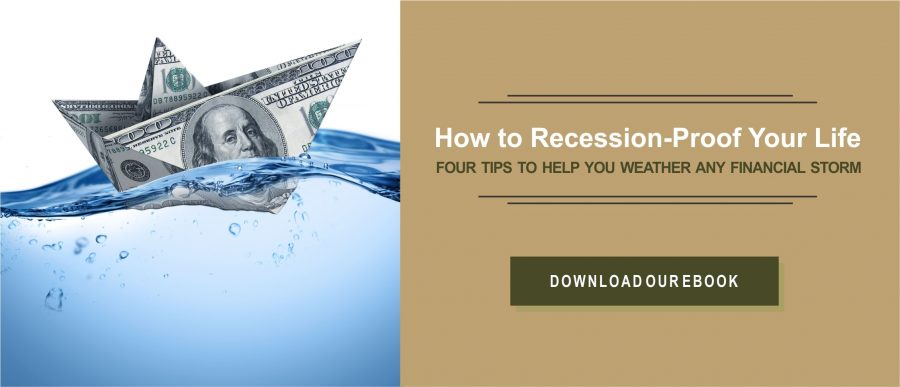Act Now for Tax Savings in 2022 and Beyond
The current tax season is either teaching or reminding Americans of the significance of planning ahead and why diversification is important in investing. To save on your tax bill this year and in the years ahead, consider these seven tips from a trusted advisor in Arizona who works with affluent investors like you.
Working with a financial advisor in Gilbert affords you tax saving investment advice. Already working with someone? Get a second opinion!
This year, Watts Gwilliam & Company wants to help you minimize your tax liability using the same methods we use ourselves. Are you applying any of these tax savings strategies into your financial plan?
Tax Saving Strategies
1. Use Your 401k as a Saving Vehicle
Assets in your retirement account appreciate over time. And dividends (or earnings) are tax-free until withdrawal. Depending on your age, financial situation, and where you are in your retirement planning journey, you may be able to make catch-up contributions. These extra contributions won’t earn as much overtime as the contributions you made earlier on, but they’re a great way to boost your savings in the few years before retirement.
Pulling money out before the legal age of retirement not only incurs a tax bill but also comes with a significant penalty fee (typically 10%). However, there are ways to use your retirement fund for a few of life’s biggest expenses – such as a down payment on a house and an expensive medical bill – using a 401k loan and the “hardship rule.” While the main goal of your retirement account is to save for retirement, this method allows you to save on income tax for short-term goals like buying a house.
2. Maximize Your HSA & FSA
If you’re enrolled in a high-deductible health insurance plan, you also have access to a health savings account (HSA) and a flexible spending account (FSA). These accounts allow you to pay for healthcare expenses with non-taxable income.
Unused funds in an HSA can be invested, which means you can turn non-taxable income into non-taxable investment account contributions. Then, you can use your FSA – which you fund with non-taxable income – for those health expenses you incur along the way. Both accounts have contribution limits and spending rules, so be sure to read the fine print before using this strategy.
4. Maximize Roth Retirement Accounts
Whether you’re on the fast track to the c-suite or working the same job for 30 years, your tax bracket is likely to be at its lowest right now. A Roth IRA or Roth 401k is a retirement account funded by after-tax contributions. Since you’ll pay tax before you make contributions, you don’t pay tax on withdrawals like you would when withdrawing from a regular 401k or traditional IRA.
Need help Recovering From Investment Loss Right Before Retirement?
5. Save More with a Backdoor Roth IRA
If you’re a high-earner and want to invest more into your retirement account and get the tax benefits of a Roth IRA, you might have to get a bit creative. A backdoor Roth IRA isn’t an actual investment account but a method to convert a regular IRA into a Roth IRA by paying taxes in that tax year. Thus, taking advantage of your current lower tax bracket.
6. Use Tax Loss Harvesting
To avoid paying capital gains on short-term and long-term investment income, some investors use a strategy called tax loss harvesting. In a nutshell, it involves selling securities at a loss to offset the capital gains tax liability. Short-term capital gains are taxed at a higher federal rate, making this most lucrative. But this strategy can also be employed for long-term capital gains as well.
7. Use Prepaid Variable Forward (PVF)
Prepaid variable forwards or PVFs offer an alternative to investors looking for a tax-friendly diversification option. A PVF is a sales contract where the seller gets paid for the sale before the transaction is officially processed. This allows investors to manage the cost basis and holding period of investments, reducing capital gains subject to taxes. If you have a large single-stock position with a low cost basis, this strategy might be perfect for you. Get the benefit of monetization without the taxation.
Which Strategies are Best For You?
Without seeing the complete picture of your investment portfolio, understanding your financial goals, and understanding your personal risk tolerance, it’s hard for anyone to give you good advice on a tax savings plan. Working with an investment management firm in Arizona is an excellent way to better plan for the financial future you want.
Work with the Watts-Gwilliam team to understand your best options, make a plan for long-term wealth, and set strategies to reach your personal financial goals. Did we mention that management of concentrated stock positions is one of our specialties?
Affluent investors are best served with a personalized approach. Start investing smarter by implementing recommended tax strategies!
To enhance the chances of building your long-term wealth, reach out to start strategizing for the rest of 2022 and into 2023. You may also want to read: Understanding Alternative Investments.

